“Slave poets”: The radical, revolutionary faith of Christmas spirituals
(Dallas News) There are about 6,000 known spirituals, sometimes called “sorrow songs.” This extraordinary body of literature contains multiple sub-sets, none more potent, more poignant, more powerful than those that deal with the Christmas narratives.
The stories in Luke’s gospel about the birth of Jesus resonated with the unnamed and unknown slave poets in a profoundly personal way, perhaps more so than any other in scripture, save the crucifixion. Perhaps it was because the African American slaves of the 19th century were strangers in an appallingly strange land, landless refugees, constantly on the move, helpless pawns in sweeping geo-political games. They were foreigners, aliens, living a precarious existence in occupied territory ruled by a harsh dictatorship that, literally, considered them to be worth less than cattle.
According to the Gospel of Luke, so too was the Holy Family. Jesus, Mary and Joseph passed through Roman-occupied checkpoints facing an unknowable future, with no place to call their own, despised and penniless aliens in their own land. The slave poets made the connection and from that created songs of uncommon, otherworldly beauty and insight.
These spirituals are transcendent because of what John Lovell Jr., that great chronicler of the spirituals, and others have termed the “Eternal Now.” To the slave, the events of the Bible were not the dusty record of 2,000 years ago, they were happening now. These were not long-dead heroes, these were very real people who lived and breathed and died now. And this was not a distant faraway land, the events of the Bible were taking place in the next plantation, in the next county or town — places most slaves would never see — now. Thus the slaves conflated the Abraham of the Old Testament with “Father” Abraham Lincoln. Harriett Tubman, who led so many slaves to freedom, was identified with Moses. And the River Jordan could be the Ohio, or any river where freedom beckoned on the distant shore. (read more, watch video performances by Odetta, Mahalia Jackson)
The history of black Santas
 (BBC News) America’s biggest shopping mall grabbed headlines recently by hiring its first African-American Father Christmas. But black Santas have been around for a lot longer than you might think – and even played a role in the civil rights struggles of the 1960s.
(BBC News) America’s biggest shopping mall grabbed headlines recently by hiring its first African-American Father Christmas. But black Santas have been around for a lot longer than you might think – and even played a role in the civil rights struggles of the 1960s.
In the overheated post-election atmosphere, Santa Claus is seen by some as another cherished cultural institution under attack by the forces of political correctness. The traditional image of Santa, as a jolly, rotund, and white, character is deeply embedded in American culture.
“Going to a department store, sitting on Santa’s lap, all of that, is very central to a certain kind of post-war, white middle-class identity,” says Prof Victoria Wolcott, a history professor at the University of Buffalo, who writes about segregation.
“To challenge that, by having a Santa Claus of colour, disturbs people.”
It appears to have been disturbing people for more than a century, judging from local newspaper reports about “negro Santas”, which tend to veer from an amused “whatever next” tone to examples of flat-out racism. (read more)
The Jewish history of Kwanzaa
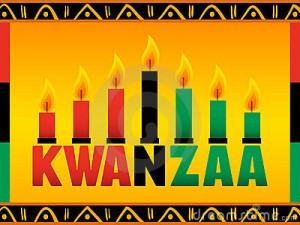 Fifty years ago, at the inaugural celebration of Kwanzaa, 60 black Americans gathered in a California living room to celebrate their distant African past.
Fifty years ago, at the inaugural celebration of Kwanzaa, 60 black Americans gathered in a California living room to celebrate their distant African past.
It was 1966. They wore dashikis and hand-woven headwear. A troupe of musicians played drums. Men and women bowed to each other and poured libations to the ancestors. Later, someone switched on the stereo and turned up the music of James Brown and Curtis Mayfield as the crowd danced.
But the central ritual of the entire evening — the ceremony everyone had come for — involved lighting a modified Hanukkah menorah.
It is just one of many connections between the harvest-themed celebration of African-American heritage and the Jewish festival of lights.
The very first Kwanzaa candelabrum was made by altering a Jewish menorah; celebrants held joint Kwanzaa-Hanukkah celebrations regularly in the early years and when critics attacked the newly-formed black holiday they also leveled criticism at Hanukkah. Detractors saw both festivals as multicultural and “politically correct” incursions on their white Christian holiday season.
Kwanzaa, an annual weeklong holiday that starts on December 26, was born in the political ferment of the 1960s as part of a newly-energized and Africa-focused black consciousness. Maulana Karenga, a prominent black nationalist and then-doctoral student created the holiday. Early enthusiasts wanted to distance themselves from Christmas and Christianity, which some saw as a white religion.
In Hanukkah, each candle on the candelabra represents a day of the holiday; in Kwanzaa, each stands for a life principle. (read more)
The slave experience of the holidays
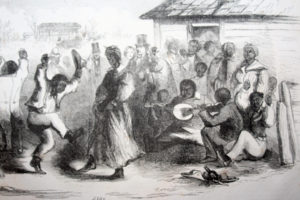 American slaves experienced the Christmas holidays in many different ways. Joy, hope, and celebration were naturally a part of the season for many. For other slaves, these holidays conjured up visions of freedom and even the opportunity to bring about that freedom. Still others saw it as yet another burden to be endured. This month, Documenting the American South considers the Christmas holidays as they were experienced by enslaved Americans.
American slaves experienced the Christmas holidays in many different ways. Joy, hope, and celebration were naturally a part of the season for many. For other slaves, these holidays conjured up visions of freedom and even the opportunity to bring about that freedom. Still others saw it as yet another burden to be endured. This month, Documenting the American South considers the Christmas holidays as they were experienced by enslaved Americans.
The prosperity and relaxed discipline associated with Christmas often enabled slaves to interact in ways that they could not during the rest of the year. They customarily received material goods from their masters: perhaps the slave’s yearly allotment of clothing, an edible delicacy, or a present above and beyond what he or she needed to survive and work on the plantation. For this reason, among others, slaves frequently married during the Christmas season. When Dice, a female slave in Nina Hill Robinson’s Aunt Dice, came to her master “one Christmas eve, and asked his consent to her marriage with Caesar,” her master allowed the ceremony, and a “great feast was spread”. Dice and Caesar were married in “the mistress’s own parlor . . . before the white minister”. More than any other time of year, Christmas provided slaves with the latitude and prosperity that made a formal wedding possible.
On the plantation, the transfer of Christmas gifts from master to slave was often accompanied by a curious ritual. On Christmas day, “it was always customary in those days to catch peoples Christmas gifts and they would give you something.” Slaves and children would lie in wait for those with the means to provide presents and capture them, crying ‘Christmas gift’ and refusing to release their prisoners until they received a gift in return. This ironic annual inversion of power occasionally allowed slaves to acquire real power. Henry, a slave whose tragic life and death is recounted in Martha Griffith Browne’s Autobiography of a Female Slave, saved “Christmas gifts in money” to buy his freedom. (read more)
TIPHC Bookshelf
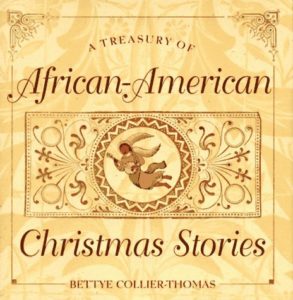 Published scholarship on black history in Texas is growing and we’d like to share with you some suggested readings, both current and past, from some of the preeminent history scholars in Texas and beyond. We invite you to take a look at our bookshelf page — including a featured selection — and check back as the list grows. A different selection will be featured each week. We welcome suggestions and reviews. This week, we offer, “A Treasury of African-American Christmas Stories,” compiled and edited by Bettye Collier-Thomas.
Published scholarship on black history in Texas is growing and we’d like to share with you some suggested readings, both current and past, from some of the preeminent history scholars in Texas and beyond. We invite you to take a look at our bookshelf page — including a featured selection — and check back as the list grows. A different selection will be featured each week. We welcome suggestions and reviews. This week, we offer, “A Treasury of African-American Christmas Stories,” compiled and edited by Bettye Collier-Thomas.
For African-Americans, Christmas is historically a very important time for celebration, reflection, and reunion within the community. “A Treasury of African-American Christmas Stories” offers a collection of poignant and historic stories from Temple University historian Bettye Collier-Thomas. Written by and about African-Americans and containing gems dating from the late nineteenth century through the Depression era, this collection reflects the Christmas experiences of everyday African-Americans and illuminates themes such as racial injustice and a distinct concept of black culture common to writers who were part of the burgeoning Harlem Renaissance. Stories by such esteemed authors as John Henrik Clarke and Langston Hughes are presented alongside pieces from newly rediscovered writers and focus on universal themes such as familial and romantic love, Christian faith, and the existence of Santa Claus, and more serious topics such as racism, violence, poverty, and racial identity. Beautifully packaged and meticulously collected, this second volume of “A Treasury of African-American Christmas Stories” is sure to find a place next to the first as a prized possession in many households.
This Week In Texas Black History
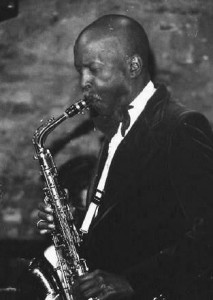 18 – Saxophonist and blues singer Eddie “Cleanhead” Vinson was born on this day in 1917 in Houston. Vinson was still a student at Jack Yates High School when he began his professional career with Chester Boone’s band in 1935. Working with Milt Larkin’s band, the next year, Vinson teamed with Arnett Cobb and Illinois Jacquet to form the group’s sax section. Vinson also wrote two Miles Davis classics, “Tune Up” and “Four.” In the early 1950s, Vinson’s own band included a young John Coltrane.
18 – Saxophonist and blues singer Eddie “Cleanhead” Vinson was born on this day in 1917 in Houston. Vinson was still a student at Jack Yates High School when he began his professional career with Chester Boone’s band in 1935. Working with Milt Larkin’s band, the next year, Vinson teamed with Arnett Cobb and Illinois Jacquet to form the group’s sax section. Vinson also wrote two Miles Davis classics, “Tune Up” and “Four.” In the early 1950s, Vinson’s own band included a young John Coltrane.
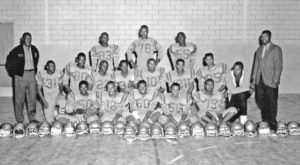 19 – On this date in 1963, the Mary A. Brown High School Leopards football team in Smithville won the Prairie View Interscholastic League Class 1A state championship, the only state football title in Smithville history. Brown, coached by Gene Sampson, finished the season with a 12-1 record after crushing Mineola’s McFarland Bears, 38-6, making Brown the Class A state Negro schoolboy football champions.
19 – On this date in 1963, the Mary A. Brown High School Leopards football team in Smithville won the Prairie View Interscholastic League Class 1A state championship, the only state football title in Smithville history. Brown, coached by Gene Sampson, finished the season with a 12-1 record after crushing Mineola’s McFarland Bears, 38-6, making Brown the Class A state Negro schoolboy football champions.
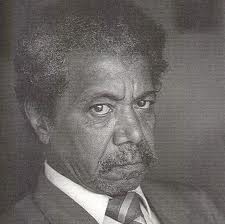 21 – On this day in 1931, Eldrewey Stearns was born in Galveston. In 1960, Stearns became the first president of the Progressive Youth Association at Texas Southern University and led the group’s demonstrations against discrimination in various Houston facilities. The group was successful in opening access for African Americans in downtown stores, and their demonstrations against employment discrimination opened jobs for blacks at drugstores, service stations and banks in the city’s black communities.
21 – On this day in 1931, Eldrewey Stearns was born in Galveston. In 1960, Stearns became the first president of the Progressive Youth Association at Texas Southern University and led the group’s demonstrations against discrimination in various Houston facilities. The group was successful in opening access for African Americans in downtown stores, and their demonstrations against employment discrimination opened jobs for blacks at drugstores, service stations and banks in the city’s black communities.
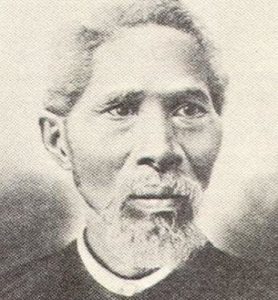 22 – On this day in 1897, Rev. John Henry “Jack” Yates died in Houston. Yates, a former slave, was born in Virginia but migrated to Texas when his wife’s master moved to Matagorda County in 1863. After emancipation, Yates moved his family to Houston where he became the first pastor of Antioch Missionary Baptist Church, the first black Baptist church in Houston. He also organized the first Baptist association for blacks in Houston. Jack Yates High School is named in his honor.
22 – On this day in 1897, Rev. John Henry “Jack” Yates died in Houston. Yates, a former slave, was born in Virginia but migrated to Texas when his wife’s master moved to Matagorda County in 1863. After emancipation, Yates moved his family to Houston where he became the first pastor of Antioch Missionary Baptist Church, the first black Baptist church in Houston. He also organized the first Baptist association for blacks in Houston. Jack Yates High School is named in his honor.
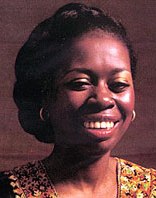 23 – Singer Esther Mae Jones was born in Galveston on this day in 1935. As “Little Esther,” she began her professional career at age 13. She changed her last name to Phillips in 1962. In 1975, she recorded her biggest hit single, “What a Difference a Day Makes,” which ranked in the top 10 of both the R&B and pop charts.
23 – Singer Esther Mae Jones was born in Galveston on this day in 1935. As “Little Esther,” she began her professional career at age 13. She changed her last name to Phillips in 1962. In 1975, she recorded her biggest hit single, “What a Difference a Day Makes,” which ranked in the top 10 of both the R&B and pop charts.
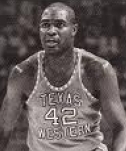 23 – On this day in 1943, David Lattin was born in Houston. Lattin graduated from segregated Evan E. Worthing High School where he was twice named a high school All-American, the first such honor for any Texas prep basketball player. Afterwards, he was the starting center for Texas Western (now UT-El Paso) on its historic 1966 national championship team that upset No. 1-ranked Kentucky and its legendary coach, Adolph Rupp. Lattin has been inducted to both the Texas Black Sports Hall of Fame and the Naismith Memorial Basketball Hall of Fame.
23 – On this day in 1943, David Lattin was born in Houston. Lattin graduated from segregated Evan E. Worthing High School where he was twice named a high school All-American, the first such honor for any Texas prep basketball player. Afterwards, he was the starting center for Texas Western (now UT-El Paso) on its historic 1966 national championship team that upset No. 1-ranked Kentucky and its legendary coach, Adolph Rupp. Lattin has been inducted to both the Texas Black Sports Hall of Fame and the Naismith Memorial Basketball Hall of Fame.
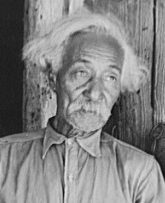 23 – Bob Lemmons (or, Lemons) died on this day in 1947. Called “the most original mustanger,” by author J. Frank Dobie, Lemmons was born into slavery in Lockport, Caldwell County in 1848, but freed at age 17 in Carrizo Springs in Southwest Texas. He moved to Eagle Pass to work and learn from rancher Duncan Lemmons, and adopted his mentor’s last name. Bob Lemmons became known for his ability to track and gather wild horses by isolating himself from humans and riding with a wild herd until they accepted his presence. He then took control of the herd by mounting the lead stallion and leading the herd into a corral on a nearby ranch. The picture book Black Cowboy, Wild Horses is based on accounts from Lemmons.
23 – Bob Lemmons (or, Lemons) died on this day in 1947. Called “the most original mustanger,” by author J. Frank Dobie, Lemmons was born into slavery in Lockport, Caldwell County in 1848, but freed at age 17 in Carrizo Springs in Southwest Texas. He moved to Eagle Pass to work and learn from rancher Duncan Lemmons, and adopted his mentor’s last name. Bob Lemmons became known for his ability to track and gather wild horses by isolating himself from humans and riding with a wild herd until they accepted his presence. He then took control of the herd by mounting the lead stallion and leading the herd into a corral on a nearby ranch. The picture book Black Cowboy, Wild Horses is based on accounts from Lemmons.
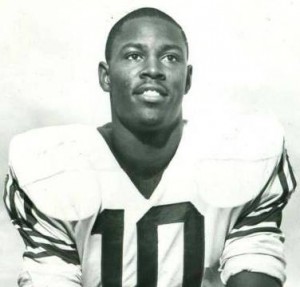 24 – Quarterback Eldridge Dickey was born this day in 1945 in Houston. Dickey was a gifted All-State performer at Booker T. Washington High School (a member of the Prairie View Interscholastic League) then starred at Tennessee State University (Tennessee A&I) from 1964 until 1967 and was a three-time black college All-America. At Tennessee State, Dickey threw for 6,523 yards and 67 touchdowns and in 1966 led the Tigers to the program’s first-ever undefeated, untied season (10-0) as well as their first black college national championship. In 1968, the Oakland Raiders made Dickey the first-ever African-American quarterback taken in the first round of a pro draft. Dickey was inducted to the Black College Football Hall of Fame in 2011.
24 – Quarterback Eldridge Dickey was born this day in 1945 in Houston. Dickey was a gifted All-State performer at Booker T. Washington High School (a member of the Prairie View Interscholastic League) then starred at Tennessee State University (Tennessee A&I) from 1964 until 1967 and was a three-time black college All-America. At Tennessee State, Dickey threw for 6,523 yards and 67 touchdowns and in 1966 led the Tigers to the program’s first-ever undefeated, untied season (10-0) as well as their first black college national championship. In 1968, the Oakland Raiders made Dickey the first-ever African-American quarterback taken in the first round of a pro draft. Dickey was inducted to the Black College Football Hall of Fame in 2011.
Blog: Ron Goodwin, author, PVAMU history professor
 Ron Goodwin’s bi-weekly blog appears exclusively for TIPHC/TBHPP. Goodwin is a San Antonio native and Air Force veteran. Generally, his column will address contemporary issues in the black community and how they relate to black history. He and the TIPHC/TBHPP staff welcome your comments. His latest blog is, “Miscellaneous Musings.” Read it
Ron Goodwin’s bi-weekly blog appears exclusively for TIPHC/TBHPP. Goodwin is a San Antonio native and Air Force veteran. Generally, his column will address contemporary issues in the black community and how they relate to black history. He and the TIPHC/TBHPP staff welcome your comments. His latest blog is, “Miscellaneous Musings.” Read it
Submissions Wanted
Historians, scholars, students, lend us your…writings. Help us produce the most comprehensive documentation ever undertaken for the African American experience in Texas. We encourage you to contribute items about people, places, events, issues, politics/legislation, sports, entertainment, religion, etc., as general entries or essays. Our documentation is wide-ranging and diverse, and you may research and write about the subject of your interest or, to start, please consult our list of suggested biographical entries and see submission guidelines. However, all topics must be approved by TIPHC/TBHPP editors before beginning your research/writing.
We welcome your questions or comments via email or telephone – mdhurd@pvamu.edu.
